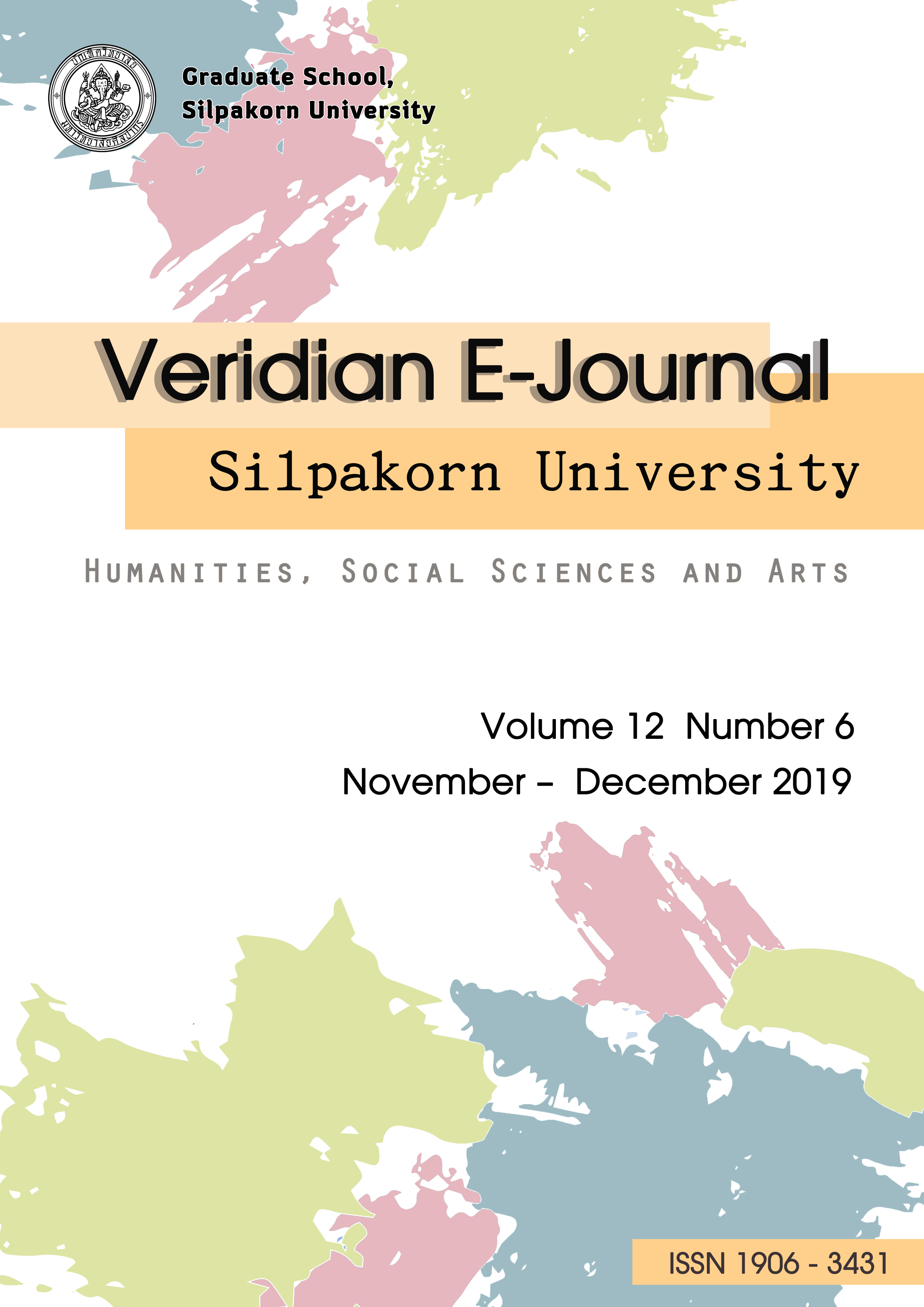กลวิธีการเรียนรู้ภาษาอังกฤษของนักศึกษาวิชาเอกภาษาอังกฤษมหาวิทยาลัยราชภัฏยะลา (English Learning Strategies of English-Majored Students at Yala Rajabhat University)
Main Article Content
Abstract
การวิจัยเรื่องนี้มีจุดประสงค์เพื่อศึกษาและเปรียบเทียบกลวิธีในการเรียนรู้ภาษาอังกฤษของนักศึกษาหลักสูตรศิลปศาสตรบัณฑิต และนักศึกษาหลักสูตรครุศาสตรบัณฑิต สาขาวิชาภาษาอังกฤษ และเพื่อศึกษาปัญหาในการเรียนภาษาอังกฤษ กลุ่มตัวอย่างคือนักศึกษาหลักสูตรศิลปศาสตรบัณฑิต สาขาวิชาภาษาอังกฤษ กลุ่มเก่ง 3 คน กลุ่มปานกลาง 38 คน กลุ่มอ่อน 45 คน และนักศึกษาหลักสูตรครุศาสตรบัณฑิต สาขาวิชาภาษาอังกฤษกลุ่มเก่ง 2 คน กลุ่มปานกลาง 33 คน เครื่องมือที่ใช้วิจัยคือ แบบสอบถามที่ดัดแปลงจาก Oxford’s Strategy Inventory for Language Learning Version 7.0 สถิติที่ใช้คือค่าความถี่ ค่าร้อยละ ค่าเฉลี่ย ส่วนเบี่ยงเบนมาตรฐาน การทดสอบ T-test และ การทดสอบความแปรปรวนทางเดียว (One way ANOVA) ทดสอบความแตกต่างรายคู่ด้วยวิธี Scheffe ผลการวิจัยพบว่า นักศึกษาทั้งสองหลักสูตรมีระดับการใช้กลวิธีในการเรียนรู้ภาษาอังกฤษอยู่ในระดับปานกลาง นักศึกษาหลักสูตรศิลปศาสตรบัณฑิตใช้กลวิธีในการเรียนรู้ภาษาอังกฤษไม่แตกต่างกันอย่างมีนัยสำคัญทางสถิติที่ระดับ .05 แต่เมื่อเปรียบเทียบเป็นรายด้าน พบว่ากลวิธีด้านความรู้คิดมีความแตกต่างอย่างมีนัยสำคัญทางสถิติที่ระดับ .01 โดยพบว่านักศึกษากลุ่มเก่งมีการใช้กลวิธีด้านความรู้คิดมากกว่านักศึกษากลุ่มอ่อน สำหรับนักศึกษาหลักสูตรครุศาสตรบัณฑิตกลุ่มเก่งและกลุ่มปานกลาง พบว่าไม่มีความแตกต่างในการใช้กลวิธีการเรียนภาษาอังกฤษอย่างมีนัยสำคัญทางสถิติที่ระดับ .05 นักศึกษาหลักสูตรศิลปศาสตรบัณฑิตและนักศึกษาหลักสูตรครุศาสตรบัณฑิตกลุ่มเก่งในภาพรวมมีการใช้กลวิธีในการเรียนรู้ภาษาอังกฤษไม่แตกต่างกันอย่างมีนัยสำคัญทางสถิติที่ระดับ .05 สำหรับนักศึกษาหลักสูตรศิลปศาสตรบัณฑิตและหลักสูตรครุศาสตรบัณฑิตกลุ่มปานกลางในภาพรวมมีการใช้กลวิธีในการเรียนรู้ภาษาอังกฤษแตกต่างกันอย่างมีนัยสำคัญทางสถิติที่ระดับ .01 แต่เมื่อพิจารณารายด้านพบว่ากลวิธีด้านความรู้คิดและกลวิธีด้านการควบคุมและตรวจสอบไม่มีความแตกต่างอย่างมีนัยสำคัญทางสถิติที่ระดับ .05 และปัญหาในการเรียนภาษาอังกฤษที่นักศึกษาหลักสูตรศิลปศาสตรบัณฑิตพบมากที่สุดคือปัญหาด้านการฟัง ขณะที่ปัญหาในการเรียนภาษาอังกฤษที่นักศึกษาหลักสูตรครุศาสตรบัณฑิตพบมากที่สุดคือปัญหาด้านคำศัพท์
The aims of this research were to study and compare English learning strategies and to study English learning problems. A sample consisted of two groups : 1) 3 high proficiency, 38 intermediate proficiency and 45 low proficiency English-majored students of Liberal Arts Program and 2) 2 high proficiency and 33 intermediate proficiency English-majored students of Education Program. The instruments used in this research were questionnaires adapted from Oxford’s Strategy Inventory for Language Learning Version 7.0. Statistics used were frequency, percentage, mean, standard deviation, T-test, One way ANOVA and Scheffe’s Method. The results of this research were as follows : Students’ English learning strategies of Liberal Arts program and Education program were at a moderate level. When comparing English learning strategies of high, intermediate and low proficiency students of Liberal Arts program, no significant difference was found at .05 for overall. However, when considering each aspect, cognitive strategy aspect of high and low proficiency students was statistically significant at .01. High proficiency students used more strategies than low proficiency students. For high and intermediate proficiency students of Education program, no significant difference was found at .05 for overall. The English learning strategies of high proficiency students of Liberal Arts program and Education program were not statistically significant at .05 for overall. For intermediate proficiency students of Liberal Arts program and Education program, their English learning strategies were statistically significant at .01 for overall. Nevertheless, when considering each aspect, cognitive strategy and metacognitive strategy were not statistically significant at .05. For the students of Liberal Arts program, the English learning problem found with the most frequency was listening whereas vocabulary is the problem which was found with the most frequency for Education students.
